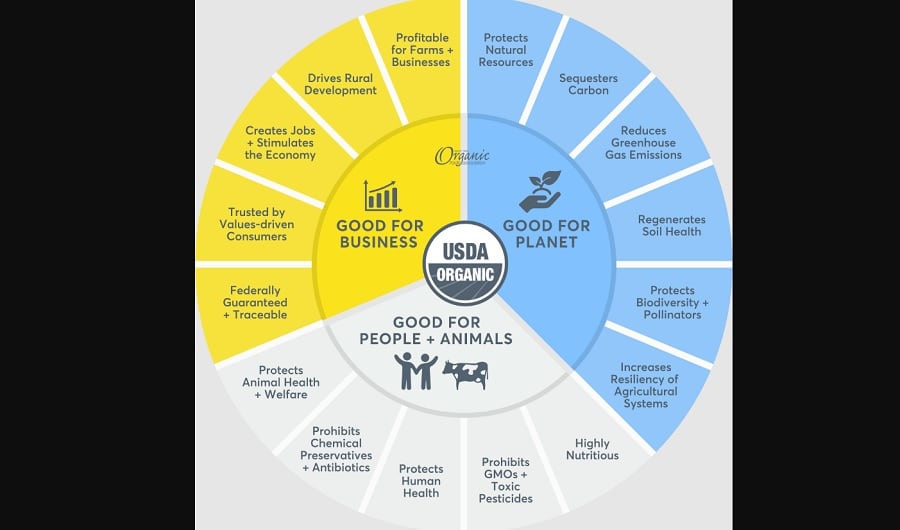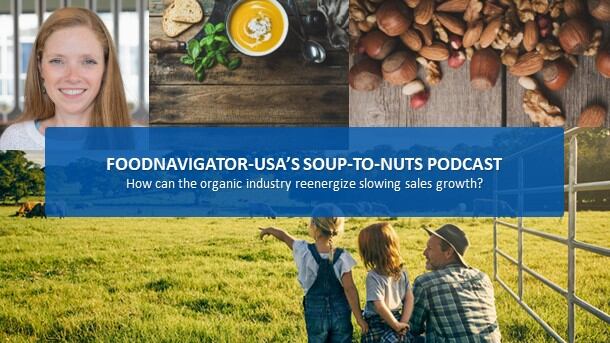Organic sales across the store “reached a new high” at $69.7bn in 2023, up 3.4% or about $2.1bn from the previous year and including $63.8bn in sales from food and $5.9bn from non-food, OTA Co-CEO Tom Chapman told reporters gathered in Washington, DC, this week for the trade group’s annual Organic Week conference.
Chapman characterized the results reported in detail in the 2024 Organic Industry Survey as “generally positive,” “in line with the growth of the total store sales,” and “better than previous years when organic has faced both confounding problems of inflation and supply chain.”
He explained organic was able to “bounce back to a higher growth rate in line with the rest of the foods” in 2023 in part by recalibrating supply chains – a drawn out process given it takes three years to transition to organic – and reconciling higher costs in part through price increases, a strategy also deployed by conventional players.
According to SPINS, the average retail price for organic increased between 6% and 9.8% across channels, with the highest increase reported in convenience and the lowest in natural grocery. This translated to an increase in total channel sales of about 4% in both natural grocery and conventional multi-outlet, and a whopping 8.3% in convenience. The only channel to drop was regional and independent, which saw a 0.8% decline.
While price increases helped offset higher costs, they took a toll on volume. SPINS found volumes decreased between 1.8% and 6.4% across channels, with regional and independent grocery reporting the heaviest hit and convenience the least.
However, the price hikes in organic were not as high as those in non-organic, which could benefit the organic industry in the coming year, according to SPINS Market Insights Director Scott Dicker.
He explained the average retail price of non-organic products grew more sharply than that for organic, causing the price gap between the two to close slightly from 22% in January 2022 to 18% in March 2024.
This tightening could fuel growth in organic among price-sensitive shoppers in 2024 because the step-up for a product perceived as more valuable is not as steep, he said.
To encourage more consumers to take that step, OTA Co-CEO Matthew Dillon added in a statement that the organic industry needs to better educate consumers about the benefits of organic, “including mitigating climate change, supporting rural economic resilience, protecting natural resources or realizing the multitude of other benefits.”
Growth in organic varies by category
The growth in organic in 2023 varied significantly category by category – a difference which could be attributed in part to a slowdown often associated with higher numbers as well as macro-trends that simultaneously stunted or helped drive conventional products.
For example, produce, which accounts for the largest segment of US sales with about 30% of the marketplace, grew slightly slower than the full marketplace at 2.6% to reach $20.5bn. Top sellers include avocadoes, berries, apples, carrots and packaged salads, according to OTA.
Grocery is the second largest organic category, accounting for 22.1% of the US organic sales in 2023, and it grew slightly faster at 4.1% to $15.4bn.
Within grocery, baby food and formula grew the fastest – up 11% to $1.5bn, followed by breakfast goods which increased about 8% to $1.8bn and in-store bakery and fresh breads, which gained almost 3% to $3.1bn, according to OTA.
The third largest category for organic is the beverage segment, which grew 3.9% to $9.4bn in 2023 to secure 13.4% of US organic sales.
Much of the growth within beverage came from non-alcoholic beverages, enhanced waters and soda, and both shelf-stable and fresh juice, which offset declines in frozen juice, Chapman said. He added coffee also continues to be a big growth driver for organic.
Growth potential: ‘intelligent indulgence’ and ‘lifespan to health span”
Organic can fuel growth further by better tapping into the four “major consumer mindset shifts” that Dicker says are driving the entire industry forward. These include “lifespan to healthspan,” “new global notions,” “protecting the planet” and “intelligent indulgence.”
Of these, he said, he sees the most potential for organic to better cater to consumer desire for functional foods that help them live healthier, longer lives, and better-for-you indulgence.
For example, he said, consumers are interested in switching to zero sugar drinks, but many include artificial sweeteners. “If there were organic options for them, they would be very excited,” he said.
This is supported by data from OTA’s Organic Industry Survey 2024, which found sales of organic soft drinks and enhanced drinks grew 41.1% in 2023, and sparkling and flavored waters, which were up 28.9%.



